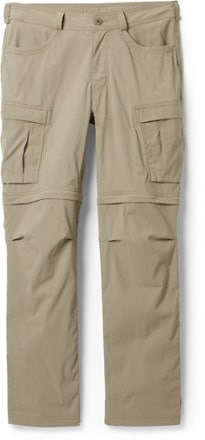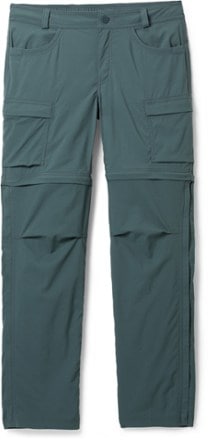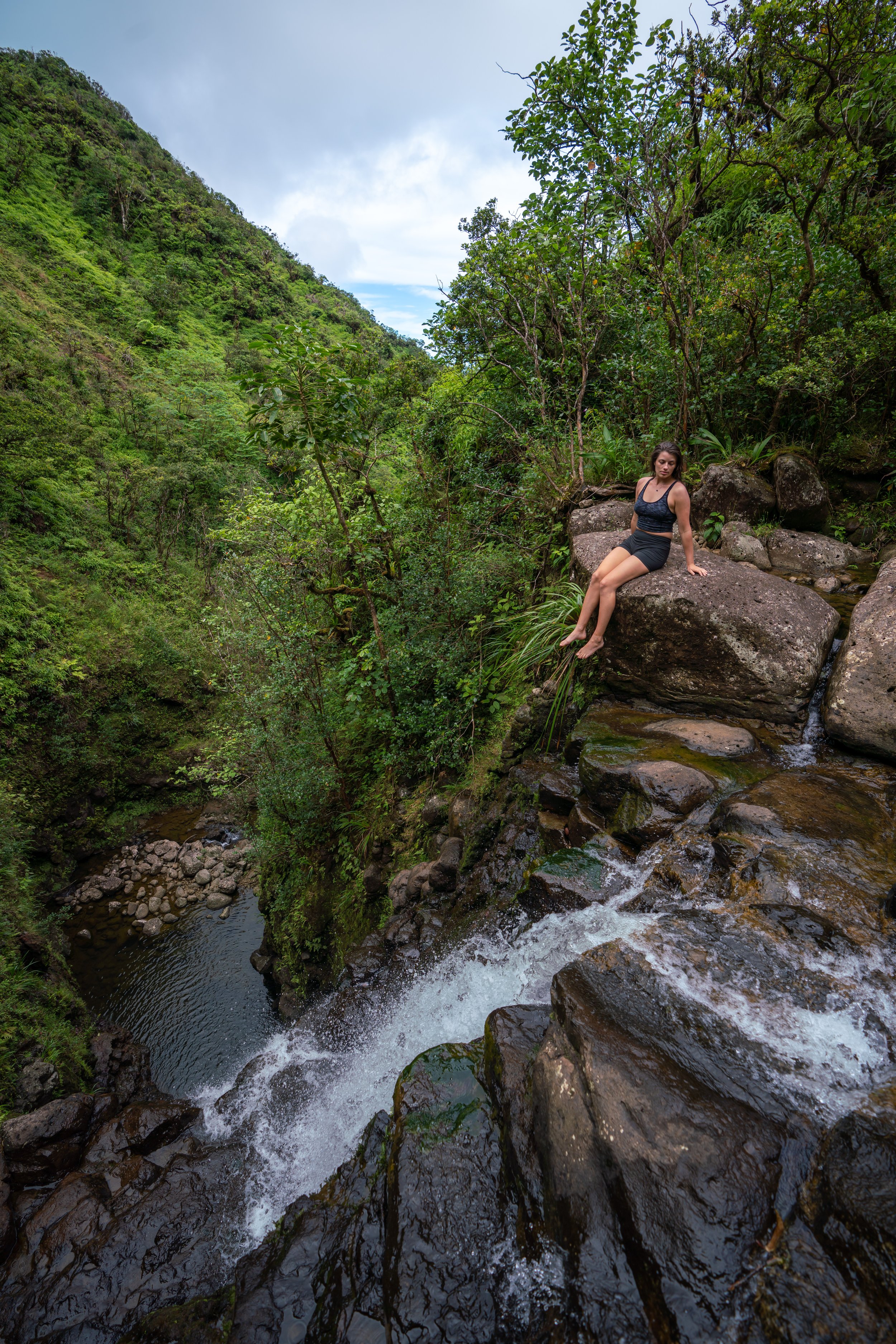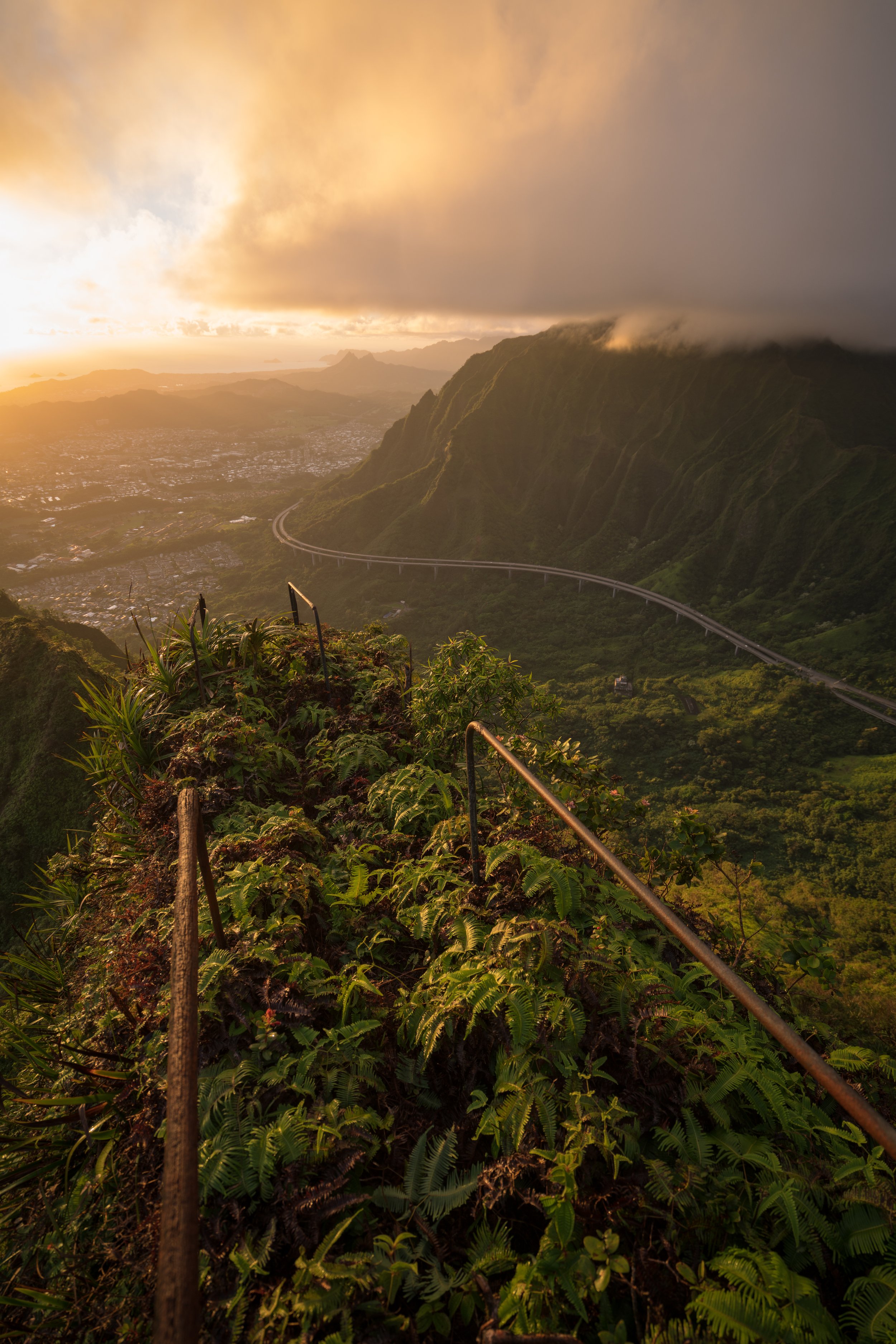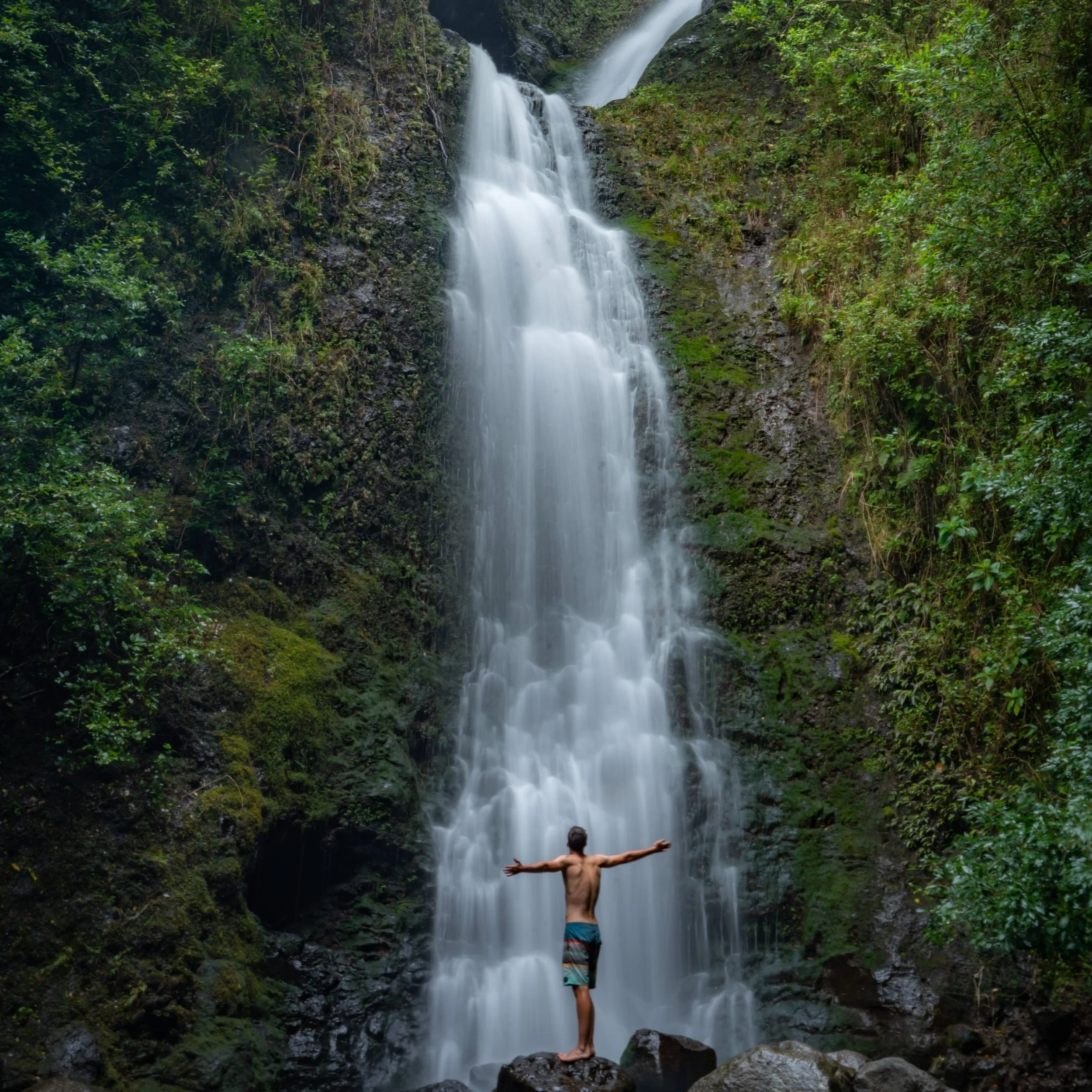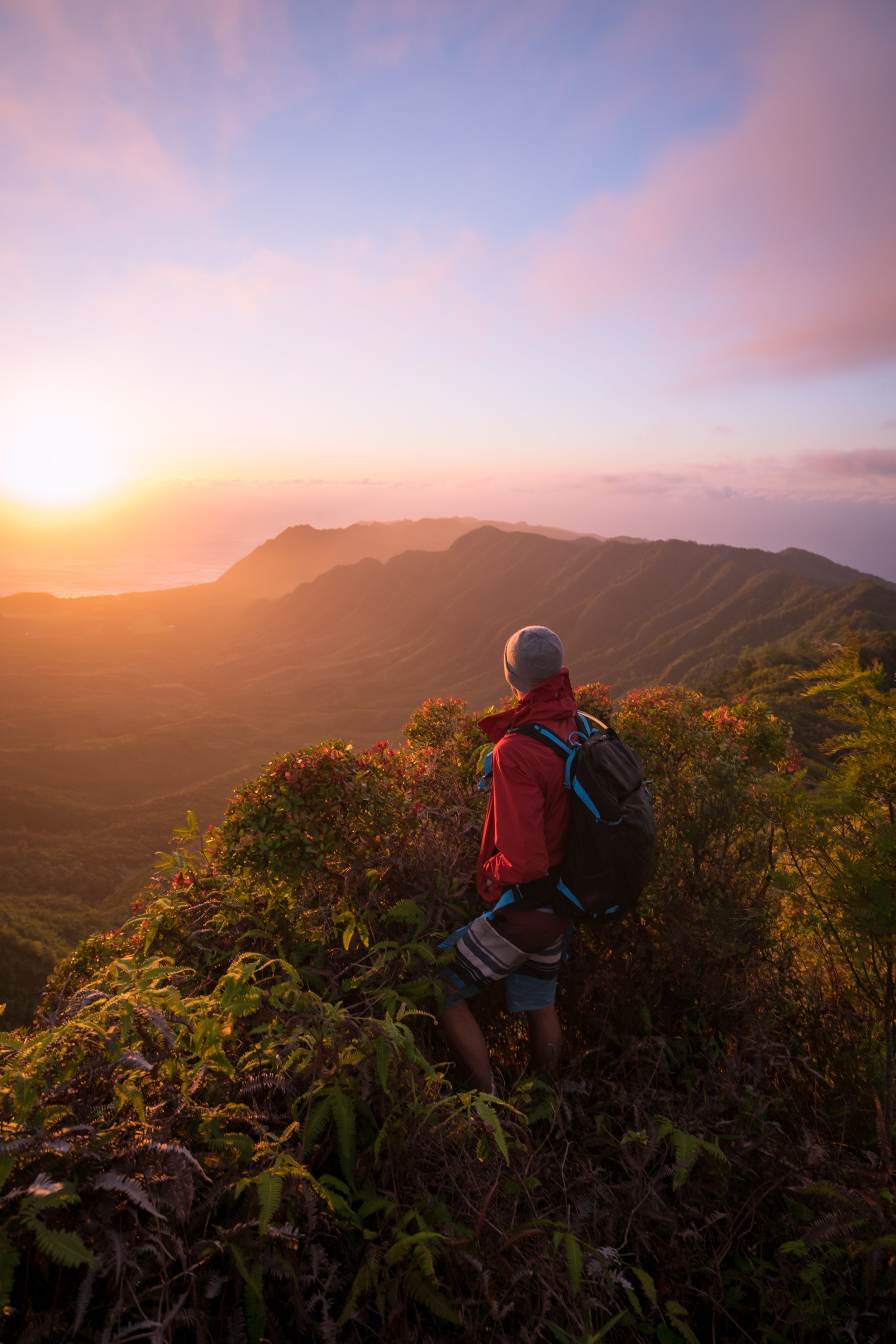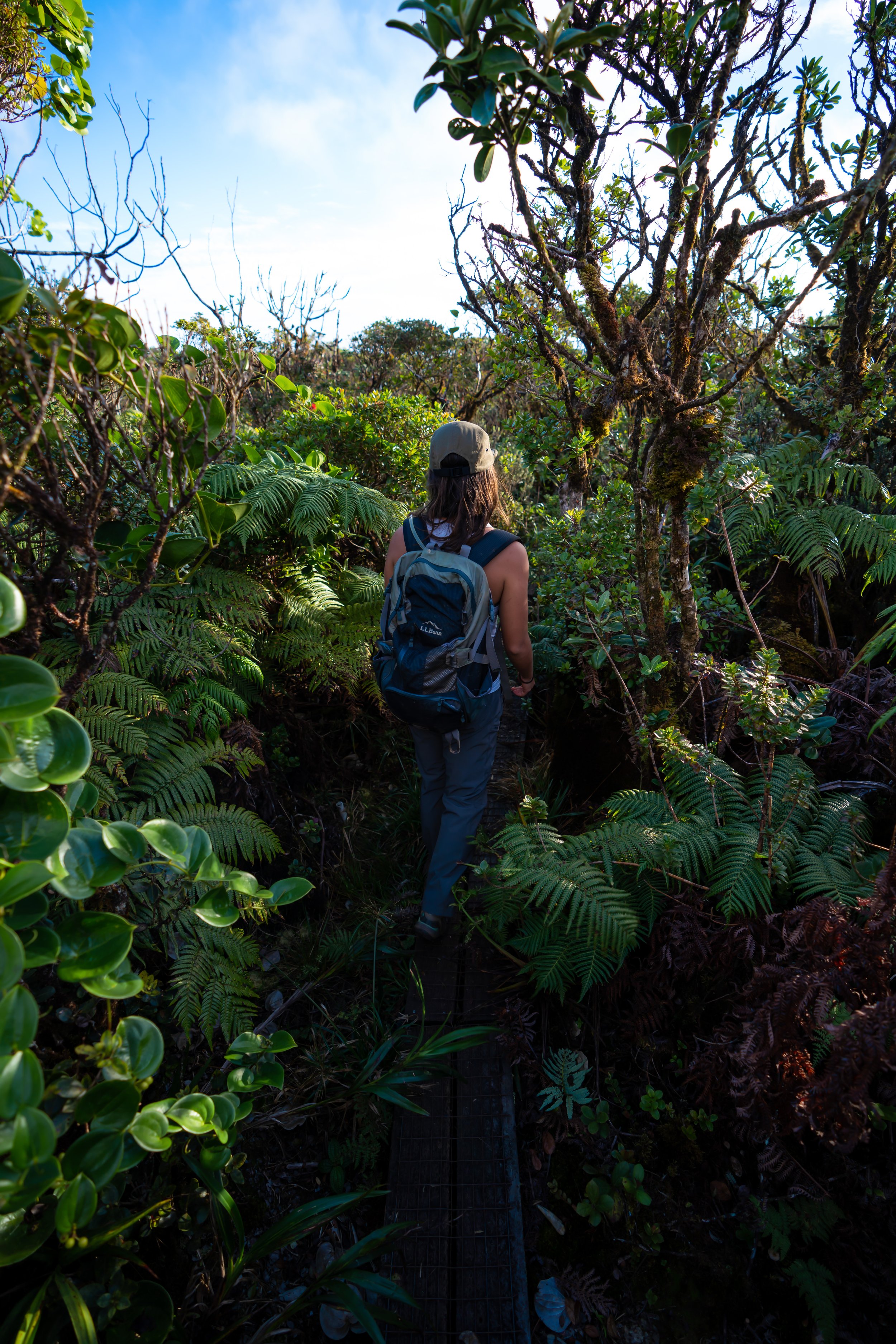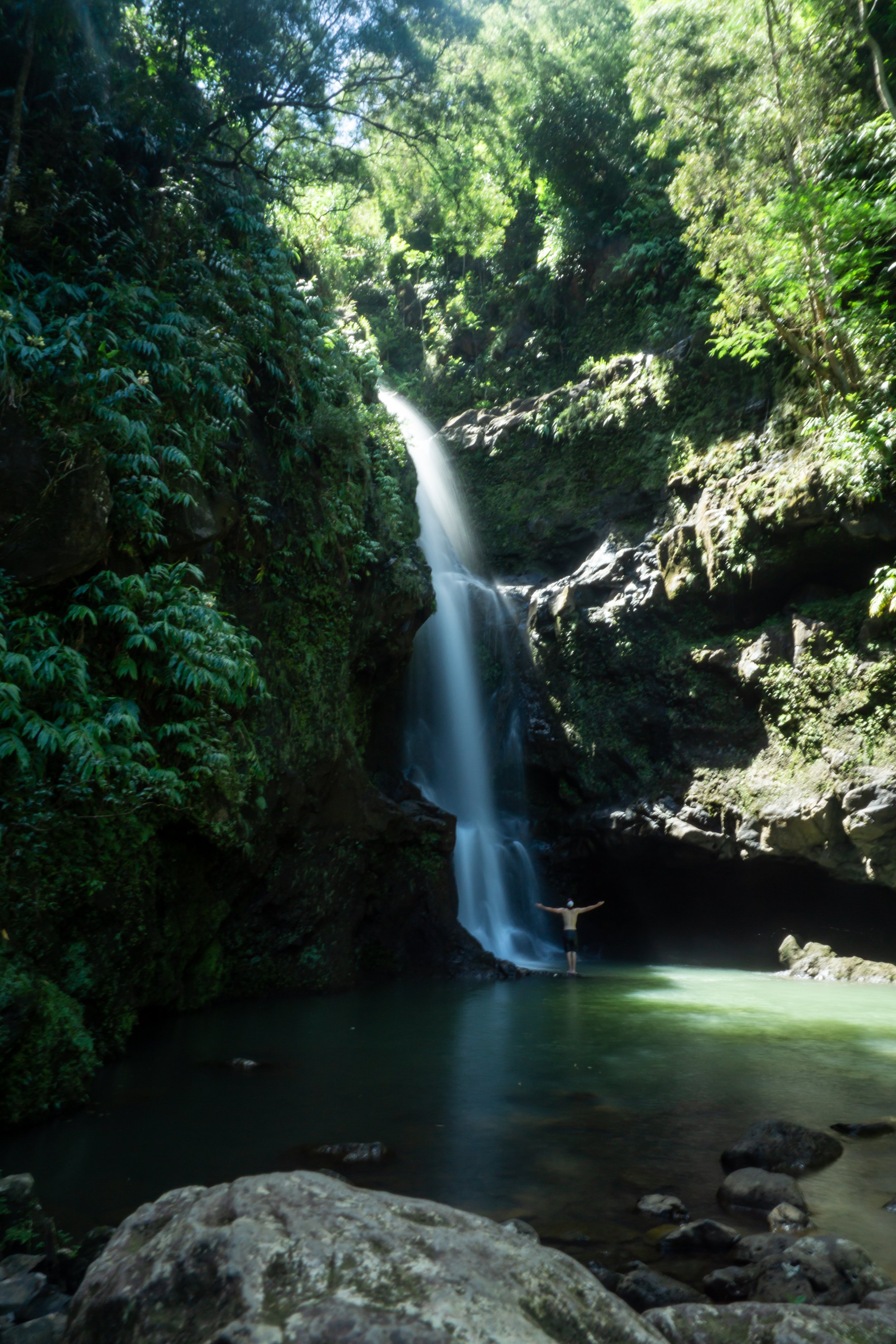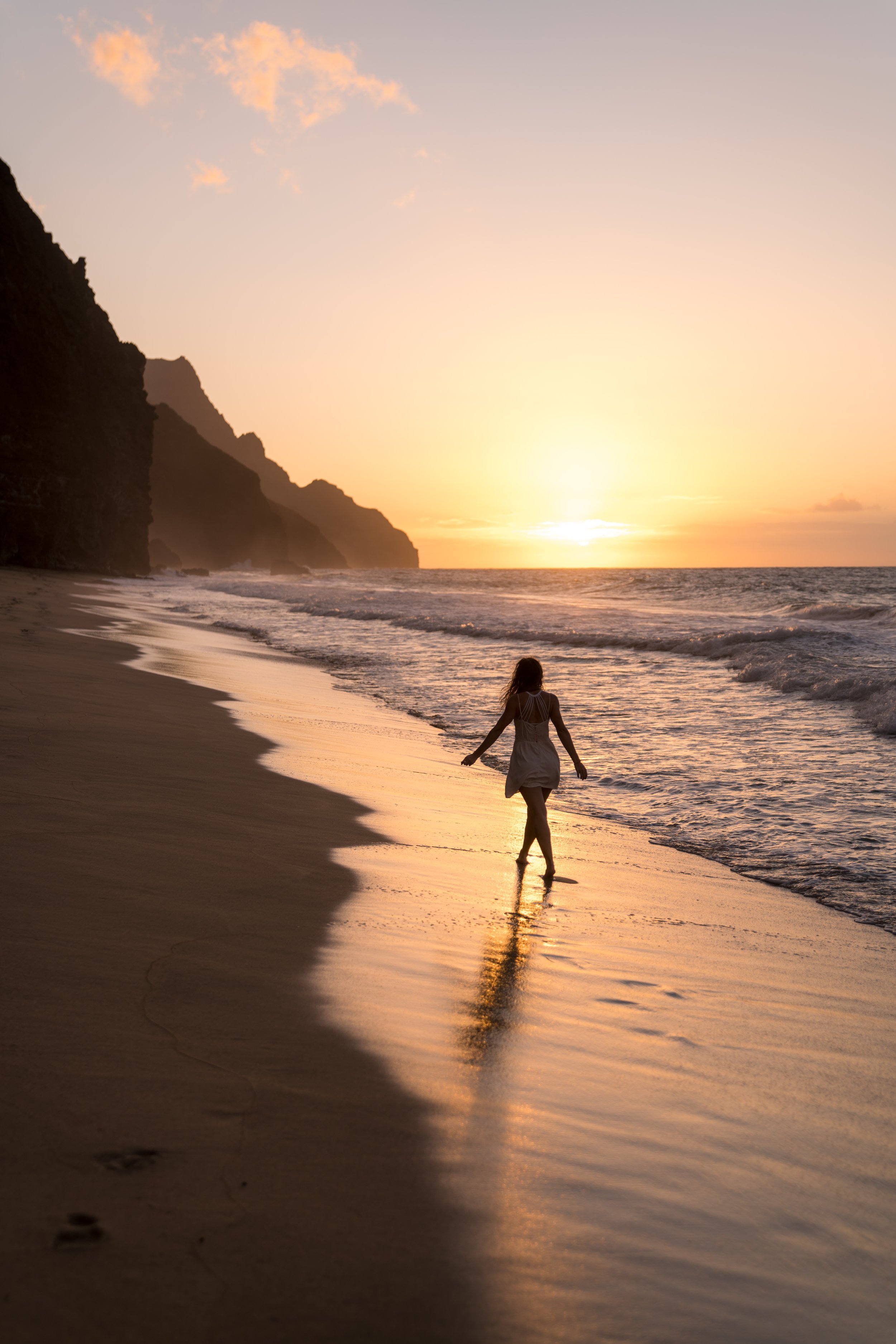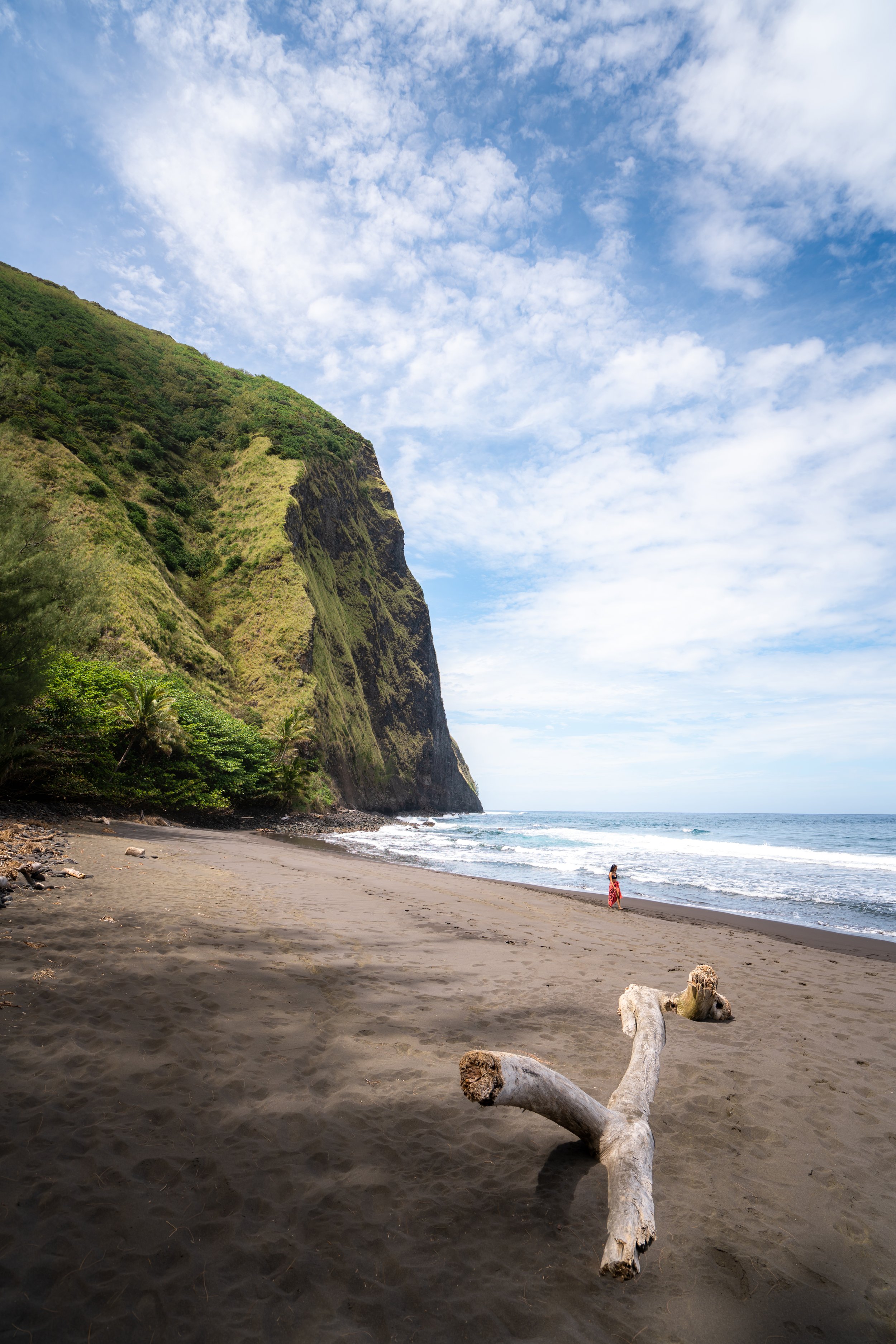Hiking the Poamoho Trail on Oʻahu, Hawaiʻi
Distance: 7.0 miles / 11.3 km
The Poamoho Trail in the northern Koʻolau Mountains on Oʻahu is what I see as the best all-around day hike on the island!
I say this because the Poamoho Trail is a relatively easy, well-maintained, and remote hike through one of the most beautiful and pristine native Hawaiian forests on the island—not to mention that the views from the summit cannot be beaten on a clear day!
By this, I mean that there are few places on the island where the summit views look out toward an entirely undeveloped landscape; the other most notable is the Keaʻau Middle Ridge Trail on the West Side of Oʻahu. However, what’s perhaps even more notable is that the Poamoho Trail is, for the most part, very flat—gaining just 560 ft. (171 m) from the trailhead to the summit.
This slow elevation gain is hardly even noticeable over the length of the trail, making the very remote Poamoho Trail much easier than it may initially seem.
All this to say, Poamoho is a personal favorite of mine because of the stunning views, the well-maintained trail, and the permit system in place, which is designed to limit the number of hikers—making the experience better and more enjoyable overall!
How to Get a Permit for the Poamoho Trail?
The Poamoho Trail is one of just a few hikes on Oʻahu that requires a permit in order to visit.
As previously mentioned, this is designed to limit the number of visitors per day, but obtaining a Poamoho Trail permit has gotten easier over the years compared to the mail-in or in-person-only options of the past.
That said, one can still mail in or walk into the downtown Honolulu office to do a same-day pick-up, but the easiest and most convenient option is the online application using the link below.
Note that a permit holder can only receive one Poamoho Trail permit every 30 days.
Book Here: Poamoho Trail Permit
Plantation-Poamoho Hele Loa Access Road [4WD Only]
The Poamoho Trailhead is located at the very end of the 5.8-mile (9.3 km) 4WD Plantation-Poamoho Hele Loa Access Road that begins at locked gate off Paʻalaʻa Uka Pūpūkea Rd.
That being said, do not attempt to drive the access road in a low-clearance 2WD drive vehicle—especially during or following periods of wet weather.
In my experience, the drive should take about 30-35 minutes each way.
Google Maps Directions: Paʻalaʻa Uka Pūpūkea Rd
Poamoho Trailhead Parking
At the end of the 5.8-mile (9.3 km) access road, parking for the Poamoho Trail can be found in one of two places just prior to the trailhead.
Please make sure to give other cars plenty of space to turn around.
Google Maps Directions: Poamoho Trailhead
My Hawaiʻi Hiking Checklist
Osprey 3L Water Bladder - The Osprey 3L water bladder is the most universal hiking and backpacking water bladder on the market, and it’s my go-to because of the slide-off seal that allows it to be quickly filled from the top. Additionally, individual parts are easily replaceable, such as the bite valve.
Blister / Heel Protectors - I swear by these cheap, amazing heel protectors to prevent blisters for nearly every kind of hiking and backpacking that I do!
Black Diamond Headlamp - Personally, I recommend the Black Diamond Storm because it is one of the brightest, lightest, and longest-lasting headlamps on the market—and trust me, the weight-to-battery-life ratio really does matter!
Hiking / Trail Running Shoes - Depending on the type of trail, I prefer to use either the Keen Targhee for longer, more rugged hiking or the HOKA Zinal Trail-Running Shoe for lighter, less intense trails. In either case, both have been amazing to me for many years across countless environments, and both can be found in men’s and women’s sizes. - (Men’s Keen / Women’s Keen) (Men’s HOKA / Women’s HOKA)
Waterproof Rain Shell - You never know when it may rain, and I’ve learned over the years that a rain shell is far better than a rain jacket. By this, I mean that it’s best to have something that the water will roll right off of, which is why I recommend the Patagonia Torrentshell 3L available in both men’s and women’s sizes.
High SPF Sunscreen - Packing high-SPF sunscreen is a must for long days outside!
Hiking the Poamoho Ridge Trail
From the parking area, the Poamoho Trail begins just up the road.
Even though Poamoho is a well-trafficked trail, I always recommend wearing pants, as the upper elevations of the ridge are a bit more overgrown and muddy than the beginning.
The pants below are my recommendations that hold up the best with the overgrowth here in Hawaiʻi, but with any hiking pants that need to be durable, make sure that they are at or near 100% nylon. This is really the most important factor!
Other than everything said above, there’s really not much more that you need to know.
The Poamoho Ridge Trail is a very straightforward hike from the trailhead to the summit, gaining elevation very gradually compared to other steeper hikes, such as Mānana Ridge.
With about 1.0 mile (1.6 km) left, the Poamoho Trail passes this sign, where the trail gets slightly more overgrown than the beginning few miles.
When the trail parallels the upper origins of the South Fork of the Helemano Stream, look out for one of Hawaiʻi’s most unique native plants called the Koliʻi.
In my opinion, Koliʻi is one of the most beautiful native species we have—a rare sight to see in bloom, as they only flower once, seed once, and then die.
Poamoho Summit
From the summit of Poamoho, you can see across much of Punaluʻu and Kahana Valley, including notable east-side peaks, such as Puʻu Piei, Puʻu Manamana, and Puʻu ʻŌhulehule from left to right in the photo below.
Koʻolau Summit Trail (KST) to Poamoho Cabin
Distance (One Way): 1.0 miles / 1.6 km
Beyond the main Poamoho Summit, the Poamoho Cabin is a popular end destination for day-hikers on the Poamoho Trail.
That being said, this cabin is built for conservation workers that spend nights in the field, and if you are going to visit, I ask that you leave it better than you found it.
Furthermore, vandalizing these cabins only gets them locked for all hikers in the community, which generally leads to more vandalism to break back in. Please don’t contribute to this problem.
In any case, to get to Poamoho Cabin, head south on the KST from the main Poamoho Summit.
The trail will follow one of the most trafficked sections on the entire KST, which is made easy by a few sections of boardwalk.
At this split, you can go either way, as the trail will meet up again shortly after.
Please close all of these gates to keep the ungulates out of these conservation areas.
Poamoho Cabin
As previously mentioned, don’t do anything destructive to this or any cabin.
Thank you!
Koʻolau Summit Trail (KST)
In my extensive KST article, I talk a lot about Poamoho being one of the best access trails to tackle the northern sections of the hike.
However, in this post, I want to urge caution before you venture further north or south of Poamoho.
Other than the little easy section to the cabin, these are extremely remote miles on the summit trail, and they should not be planned lightly. The KST to the south of Poamoho will seem light and fast until an abrupt end at the windward notch, which is when you’re right back in the worst of it again. As well, the KST north of Poamoho will get overgrown immediately when you leave the summit area, and there are no exit trails until Papali Ridge, located a long way past Poamoho.
All said, make sure that you have it mapped and planned well because options to leave the summit once you’re far from Poamoho in either direction are few and far between.
Read My Separate Post: Koʻolau Summit Trail (KST)
Native Plants on the Poamoho Trail
The Poamoho Trail is arguably one of the best trails on the island to find a variety of native Hawaiian plants. Some of these include ʻŌhiʻa lehua (all three Oʻahu species), ʻAhakea, Kōpiko, ʻĀlaʻa, Akaʻawa, Koliʻi, Alani, and Naupaka, to truly name only a few.
In addition, Poamoho is also one of the most valuable conservation areas on Oʻahu, and being the case, I ask that you do everything you can to minimize your impact.
If you’d like to learn more about these and many other native Hawaiian plants from across the islands, I encourage you to check out my separate post using the link below.
Read My Separate Post: Native Hawaiian Plant Guide
More Oʻahu Adventures
If you’re interested in reading about some more amazing Oʻahu adventures, check out my separate posts below!
Best Hotels & Restaurants in Waikīkī
If you’re trying to decided where to stay on Oʻahu, check out my top 10 list for the best resorts and restaurants in Waikīkī.
I break down what makes one hotel a better choice over another, so that you can find the best fit for your stay on the island.
Read My Separate Post: Best Waikīkī Hotels & Restaurants
HNL Airport-Hotel Shuttle
Prices on ride-share apps like Uber/ Lyft cannot beat the price of booking your hotel shuttle prior to arrival. I say this because there are additional fees for ride-share airport pick-ups at Honolulu Airport (HNL), which is why I recommend booking your transportation in advance using the options below.
Additionally, the last option below will go as far as the Ko ʻOlina Resorts on the West Side and Turtle Bay on Oʻahu’s North Shore!
Best Way to Book Rental Cars!
I travel quite a bit, and I know firsthand that finding a good rental car deal can be a challenge, but that’s why I recommend comparing all of your options with Discover Cars.
In short, Discover Cars is a well-known, reputable business that allows you to search for the best deal across companies, and they have the best full-refund cancellation policy I’ve ever seen, valid up to 72, or sometimes even 48, hours prior to your reservation!
Book Here: Discover Cars
Visiting Other Islands
If you are visiting Oʻahu or heading to another island, check out some of my personal recommendations for Oʻahu, Maui, Kauaʻi, Molokai, Lānaʻi, and Hawaiʻi Island (Big Island) in these separate posts.
If you’re trying to decide which island is right for your visit, check out my overview about each island in the post below.
Read My Separate Post: What is the Best Hawaiian Island to Visit?
What is the Best Time of Year to Visit Hawaiʻi?
The weather in Hawaiʻi can often appear to be warm and beautiful throughout the year, but in my experience, there is a lot more to consider when planning what time of year to visit the islands, such as what island you are considering, what sides of each island do you plan to stay, what activities are you most interested in, the wildlife, and countless other nuanced variables that can all impact the type of trip you can expect to have.
For these reasons, I highly recommend reading through my separate article to not only understand my thoughts regarding the best time of year to come to Hawaiʻi but also what you need to consider based on the time of year that you plan to visit.
Read My Separate Post: What is the Best Time of Year to Visit Hawaiʻi?
10 Best Tours & Excursions on Oʻahu
There are a lot of different tour options to choose from on Oʻahu, but to make it easier to decide, I made a list of my favorite tours because some things simply are better with a local guide!
Read My Separate Post: Best Tours on Oʻahu
Safety
All hikes in Hawaiʻi should not be compared to trails outside of the islands, and hikers should exercise due caution on every adventure, given that many are extremely dangerous.
By this, I mean that Hawaiʻi is known for hot, humid weather, steep, dramatic, and unstable cliffs, and flash floods, which can occur without warning. Therefore, it is important that you check the local forecast, understand the physical condition of your entire group, and pack sufficient food and water before attempting any adventure.
Disclaimer
All information provided on this blog is for informational purposes only and is not intended to be a substitute for information or advice from qualified professionals or managing agencies.
Noah Lang Photography LLC makes no representations or warranties regarding the accuracy or completeness of the information provided here, and readers should use their own discretion, judgement, and seek professional advice where it is appropriate.
Furthermore, Noah Lang Photography LLC shall not be held responsible for any injuries, lost individuals, or legal issues arising from the use of information provided on this website, and if applicable, the above safety disclaimer should be referenced to provide a generic overview of the risks involved.
All said, the content on this blog is for the sole use of Noah Lang Photography LLC, and unauthorized use or reproduction of this content is strictly prohibited.
Disclosure
This post is not sponsored.
However, some of the links in this post are affiliate links, which means that I may earn a small commission if a purchase is made through one of those links. This commission comes at no additional cost to you, and I only recommend products that I personally use and believe will add value to my readers. Thank you for your support, which enables me to continue creating more!
To read the full privacy policy, click here.

About This Blog
Noah Lang Photography, also known as @noahawaii, is 100% reader-supported!
I do not accept guest articles or sponsored content of any kind on my blog, which is why, if you enjoy the outdoor and travel content I create, please consider buying me a coffee!
I appreciate your support, which helps me continue to keep this blog alive!










